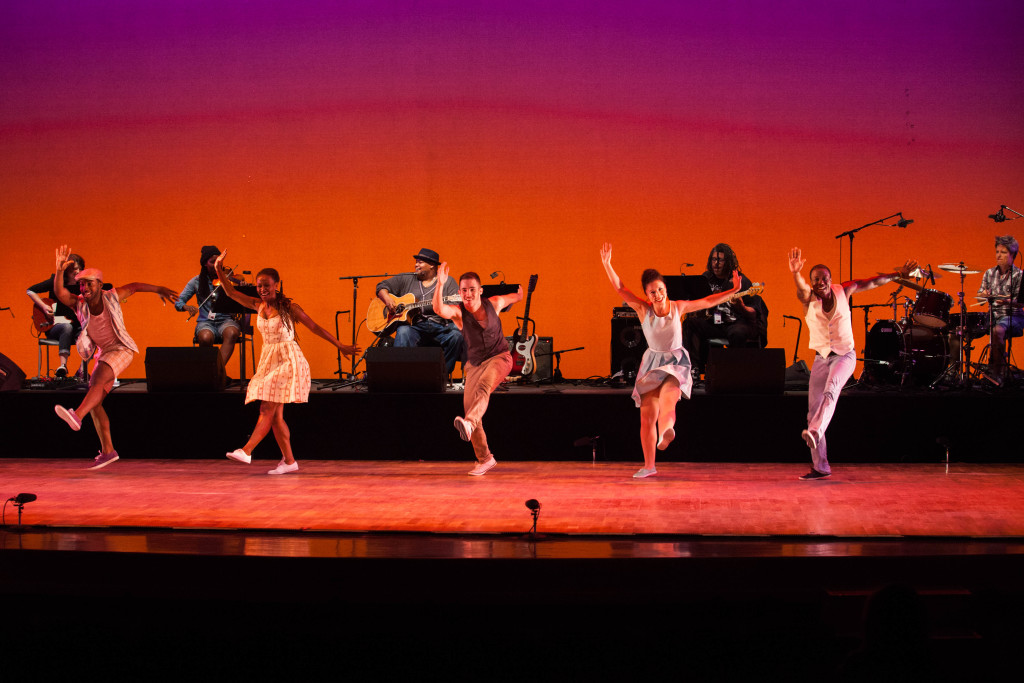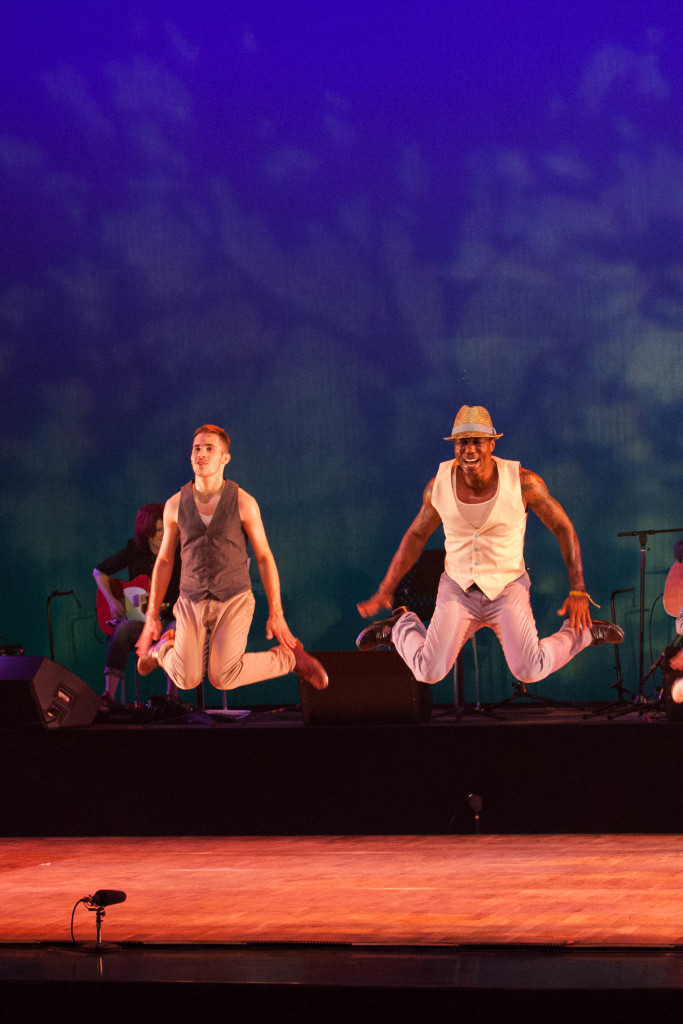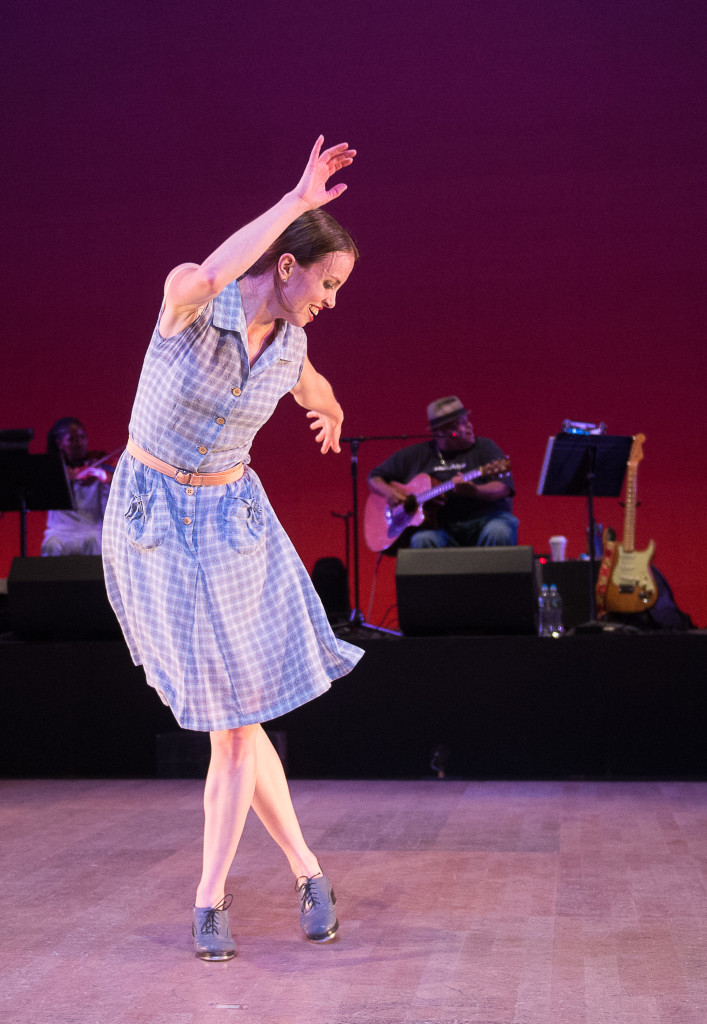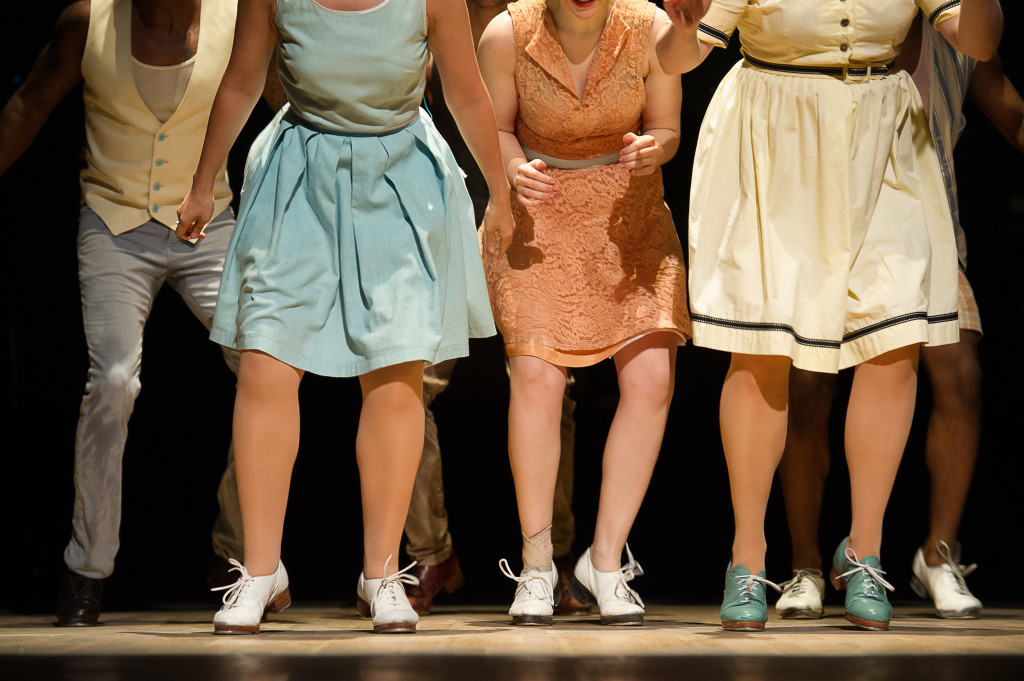Michelle Dorrance’s swift rise as a key figure in contemporary dance can be charted via her brief history-so-far with Jacob’s Pillow. She first brought her boundary-breaking tap-dance troupe, Dorrance Dance, to the festival’s free outdoor showcase, Inside/Out, in 2011. Two years later the company was a featured act on the Pillow’s small experimental stage. That show was so popular that last summer her residency extended over two weeks. And this week she’s doing another sold-out run, this time in the large mainstage hall.
“Tap predates jazz,” she explained when introducing an informal showcase of student work at the Pillow last summer. That is, before the blue note came the shoe note. But Dorrance is no strict preservationist – quite the contrary. Steeped as she is in the history and conventions of “America’s most longstanding indigenous jazz vernacular,” she is actively expanding its boundaries, fashioning a kaleidoscopic diversity of styles and traditions.
The Blues Project, playing through this weekend, is a somewhat revised version of the show that premiered here in 2013. It’s a multidisciplinary collage of choreographed and improvised dance, set to live music by the amazing Toshi Reagon and her almost-all-woman band BIGLovely. The show perfectly captures Dorrance’s mission to “honor tap dance’s uniquely beautiful history in a new and dynamically compelling context, not by stripping the form of its tradition, but by pushing it: rhythmically, aesthetically and conceptually.”
Dorrance’s embrace of tap owes more to Bill “Bojangles” Robinson than to Fred Astaire, and continues the renascence of the form spearheaded by Gregory Hines and Savion Glover (Dorrance’s co-creators Derick C. Grant and Dormeshia Sumbry-Edwards both worked in Glover’s game-changing Bring in ’da Noise, Bring in ’da Funk). This show traverses multiple tap-allied dance forms, from soft-shoe (and no-shoe) to Lindy to break.
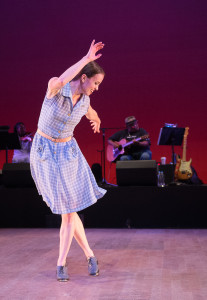 The music likewise ranges far beyond the blues. Dorrance notes that Reagon, too, “is a revolutionary, but simultaneously an artist who honors and embodies tradition. She blows genre out of the water” while carrying deep-rooted connections to folk, blues and spirituals, and through them to rock and soul.
The music likewise ranges far beyond the blues. Dorrance notes that Reagon, too, “is a revolutionary, but simultaneously an artist who honors and embodies tradition. She blows genre out of the water” while carrying deep-rooted connections to folk, blues and spirituals, and through them to rock and soul.
The multiracial company of nine dancers are an eclectic bunch themselves, with hardly a conventional dancer’s shape or stance among them. And they are no simple hoofers. Though planted at floor level, the routines engage every part of the body in fitful, flexuous, sometimes frantic movement – which makes them a perfect fit for the Pillow, which is all about bodies in motion. The Blues Project’s notes and steps were created in tandem, so the taps are not only laid into the percussive soundtrack; the dancers’ feet find the beat inside the beat of the musical cross-rhythms.
If there’s one element that unites the interlocking pieces in this program, it’s call-and-response, an idiom whose lineage runs from work songs and church meetings through jazz and blues to hip-hop. Here, there’s a constant shifting exchange between the musicians and the dancers and among the dancers themselves. We first feel it when fiddle player Juliette Jones steps down from the bandstand to accompany a barefoot hoedown. But its full flower comes in the evening’s three improvised solos, where Dorrance, Grant and Sumbry-Edwards take the stage in turns to act, react and interact with Reagon’s own semi-improvised solo flights of fancy.
The Pillow’s season continues through August, with two new programs each week. Next up: two genre-bending contemporary ensembles – Nederlands Dans Theater 2, the experimental youth wing of the famed Dutch company; and Brooklyn-based Big Dance Theater in Triple Feature, a multimedia collage drawn from iconic film and literature.
Photos by Christopher Duggan and Morah Geist, courtesy of Dorrance Dance.
If you’d like to be notified of future posts, email StageStruck@crocker.com

